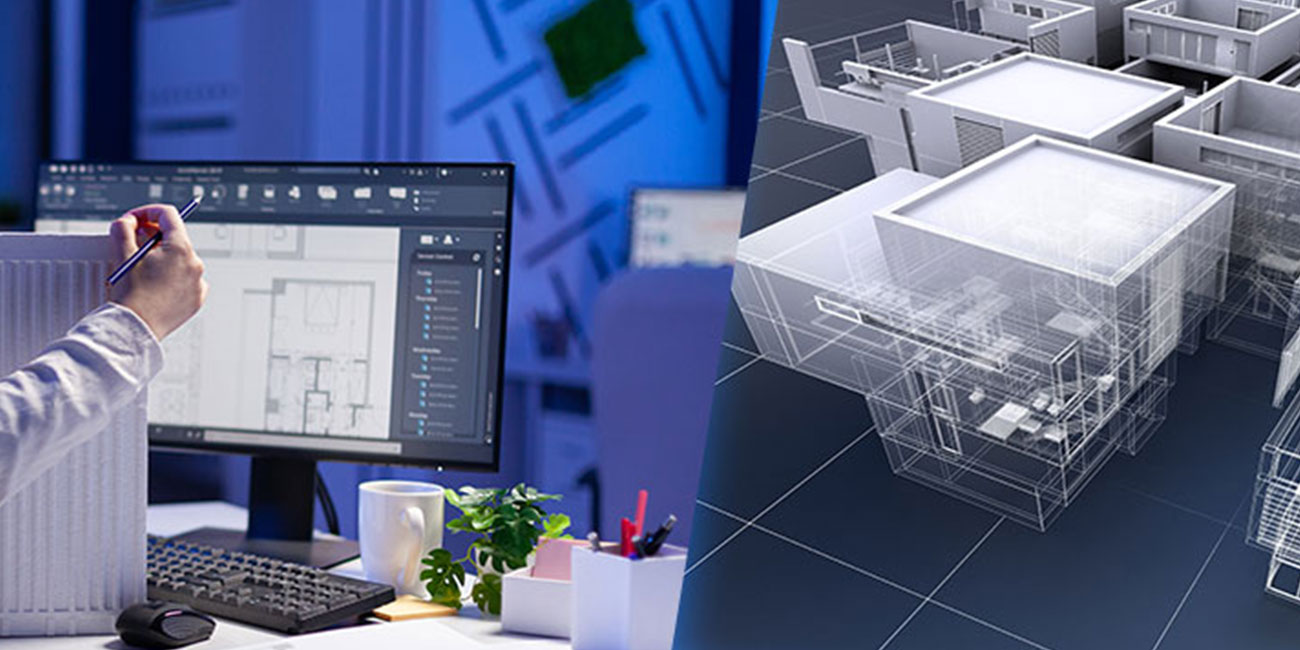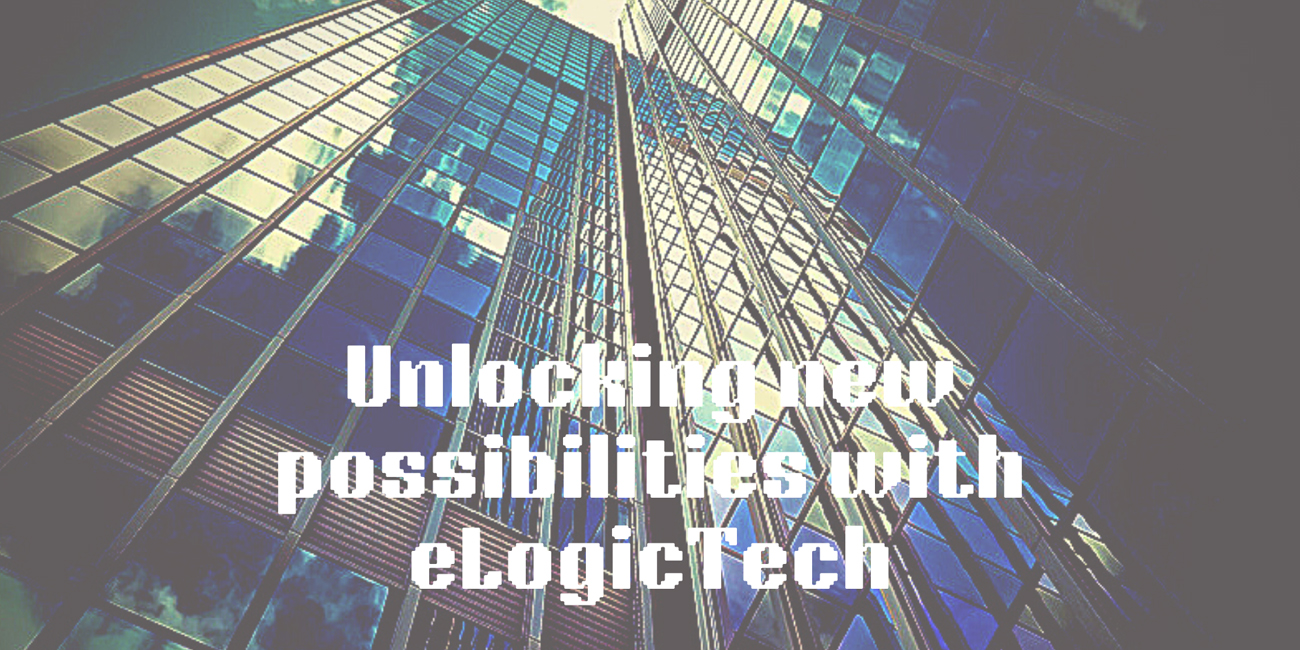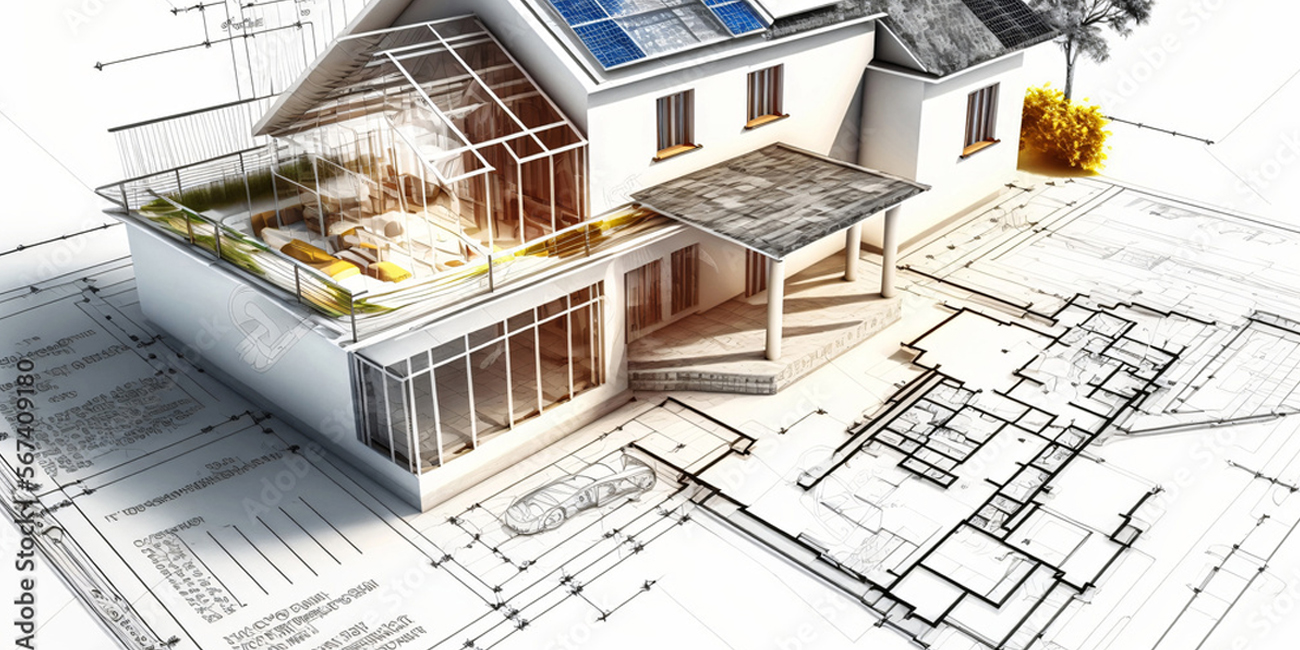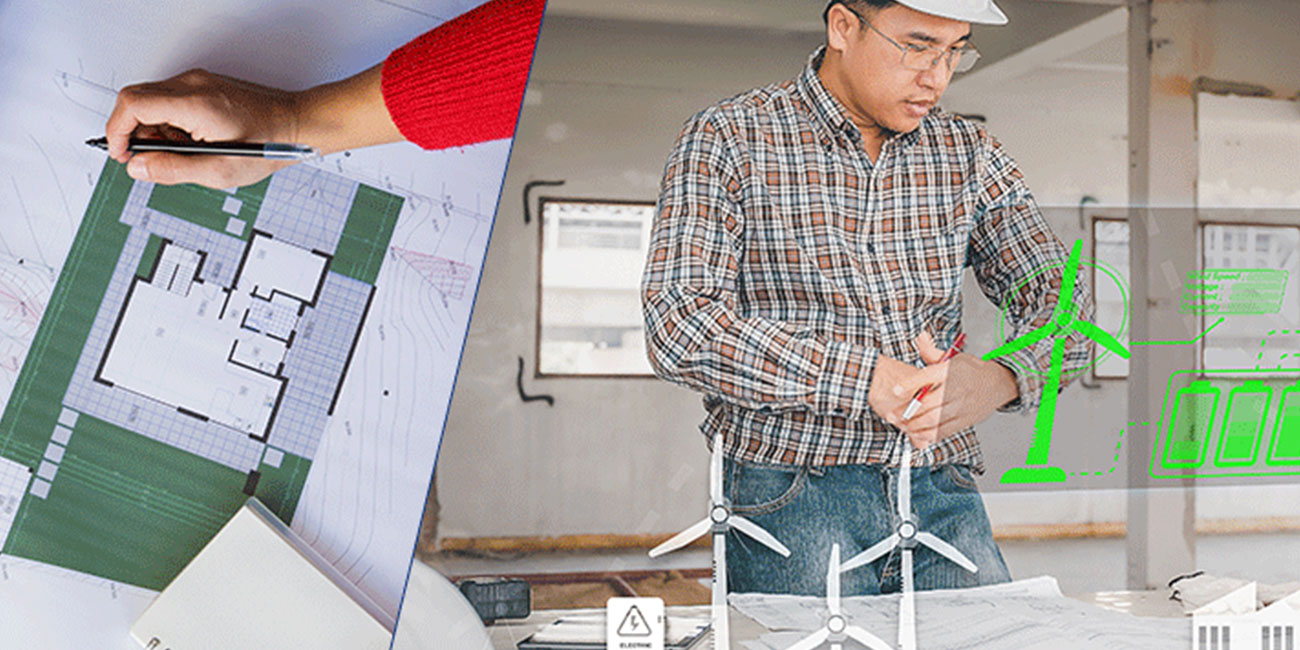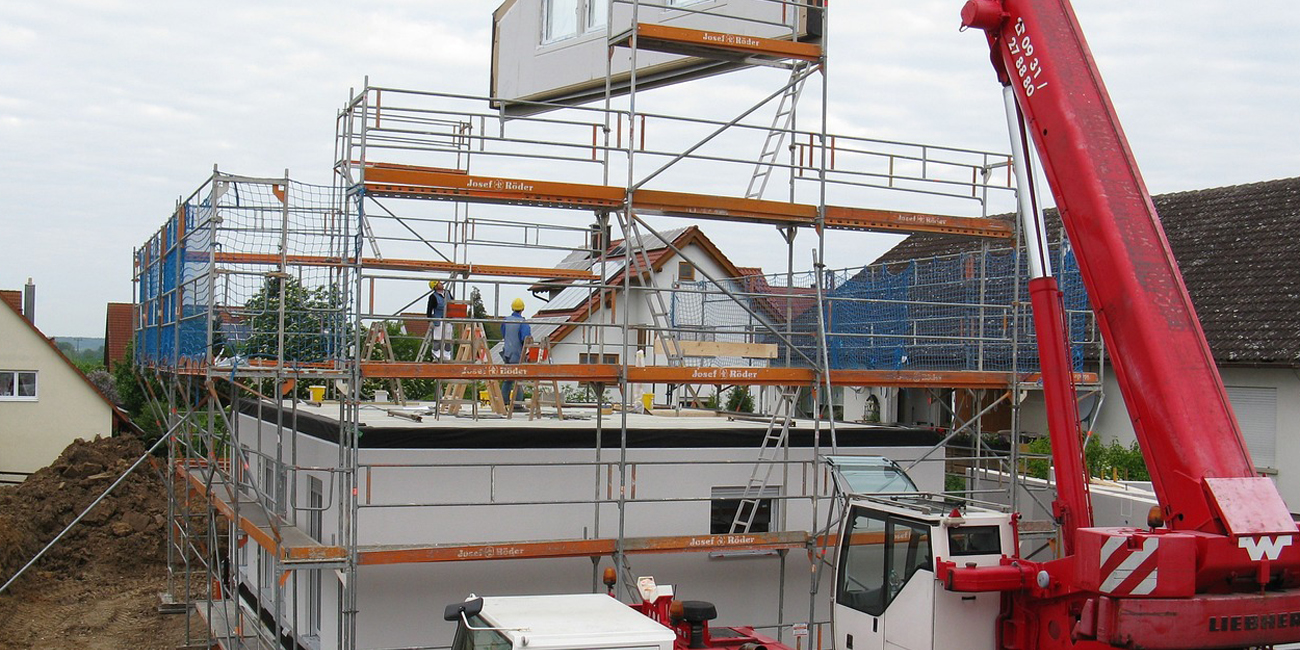
In a world where time equals money and efficiency is essential, it is helpful that a revolution is taking place in the construction industry. Prefabrication, an innovative building approach that challenges established on-site processes, is revolutionizing the industry.
eLogictech, a visionary firm driving the modernization of construction procedures through breakthrough prefabrication solutions, is at the forefront of this transformation.
The days of laborious on-site construction plagued by weather delays, cost overruns, and unpredictable outcomes are long gone. Prefabrication, with its off-site manufacture and fast assembly, is changing the way buildings are built. And, with its cutting-edge technologies and constant commitment to innovation, eLogictech is at the forefront of this paradigm change.
Prefabrication and Modularization
Prefabrication is a construction procedure that involves the manufacturing and assembly of building components or full building sections in a controlled industrial environment. It is also known as off-site construction or modular construction. These prefabricated parts are then transported and placed on-site, eliminating the need for considerable on-site building labor.
Prefabrication has many advantages over traditional building methods. It improves efficiency and productivity by minimizing weather-related delays and streamlining manufacturing operations. The controlled factory environment ensures greater quality control and precision in manufacturing, resulting in better construction results. Furthermore, prefabrication frequently results in cost savings, less material waste, and shorter project schedules.
The notion of prefabrication has acquired substantial support in the construction industry because of its potential to overcome common difficulties faced by traditional construction methods, such as labor shortages, rising construction costs, and project delays. Construction organizations can boost production, streamline procedures, and execute projects more effectively by utilizing prefabrication techniques.
As a leading technology vendor, eLogictech has been at the forefront of advancing the acceptance of prefabrication in the construction sector. eLogictech enables architects, engineers, and construction professionals to embrace the benefits of prefabrication and modularization procedures for enhanced project outcomes through their creative solutions and superior software platforms.
The following are the key principles of prefabrication, commonly known as off-site construction:
- Till procedures: Prefabrication is based on breaking down a building or structure into modular components. These components are produced off-site in regulated industrial environments, allowing for great precision and quality control. Modularization enables the efficient manufacture and construction of standardized building pieces that may be easily transported and assembled on-site.
- Standardization: A crucial principle of prefabrication is standardization. Prefabrication permits the mass production of components that can be used across various projects by developing standardized design and manufacturing methods. By ensuring comparable dimensions, requirements, and performance of prefabricated pieces, standardization increases efficiency, cost savings, and quality control.
- Assembly-Line Production: Prefabrication incorporates assembly-line production technologies that are popular in the industrial industry. Prefabrication allows for efficient component production and assembly by structuring the manufacturing process into a set of sequential jobs. This method reduces waste, optimizes worker use, and boosts overall productivity.
- Quality Control: Throughout the production and assembly stages, prefabrication stresses stringent quality control procedures. Components are manufactured under controlled settings, allowing for rigorous inspections and adherence to quality requirements. Prefabrication delivers uniform and high-quality building elements that meet or exceed regulatory requirements by employing quality control processes.
- Logistics and Transportation: Prefabrication necessitates rigorous logistics and transportation planning and coordination. Prefabricated components must be delivered from the manufacturer to the construction site after they have been made. To ensure safe and timely delivery, effective logistics management, including route planning, transportation methods, and timely and secure packaging, is important.
- On-Site Assembly: Following transportation, the prefabricated components are assembled on-site in accordance with the design and construction plans for the project. Cranes, specialized equipment, and expert manpower are often used on-site to ensure the correct placement and integration of prefabricated pieces. A successful assembly process requires effective coordination and communication between off-site and on-site employees.
Advantages of Prefabrication in Revolutionizing the Construction Industry
- Increased Efficiency: By transferring a significant amount of the construction process from the chaotic on-site environment to controlled factory settings, prefabrication considerably improves construction efficiency. Prefabrication shortens project deadlines and allows for faster completion of building projects by streamlining production processes and optimizing workflows.
- Saves costs: Prefabrication can result in significant cost savings throughout the construction process. Prefabricated components can be created more efficiently by utilizing economies of scale and standardized production procedures, resulting in less material waste and lower labor costs. Furthermore, the shortened building period results in lower financing and overhead costs.
- Improved Quality Control: Prefabrication enables more stringent quality control methods in a factory-controlled environment. Building components are precision-machined and subjected to stringent inspections to ensure consistent quality and conformity to design standards. Higher-quality buildings with fewer flaws and rework result from this quality assurance.
- Weather Independence: Traditional construction is sometimes impeded by weather-related delays, extending project timeframes and increasing costs. Because most building work is done indoors, prefabrication minimizes this reliance on weather conditions. Prefabrication enables increased project predictability and early completion by eliminating weather hazards.
- Improved Safety: When compared to on-site building, factory-based prefabrication delivers a safer work environment. Workers work in controlled environments with defined safety measures, reducing the risks associated with on-site hazards like falls, accidents, and exposure to extreme weather conditions. Reduced accidents and improved overall project well-being result from improved worker safety.
- Sustainability: Prefabrication enhances sustainable construction processes and has a lower environmental impact. It reduces the environmental effect of construction projects by maximizing material utilization, eliminating waste, and implementing energy-efficient designs. Furthermore, the controlled production environment promotes more efficient energy usage and recycling.
- Design Flexibility: Despite popular belief that prefabrication limits design inventiveness, modern prefabrication techniques provide sufficient design flexibility. Prefabricated components can now be tailored to satisfy specific architectural and design requirements thanks to technological improvements. Prefabrication's modular structure also enables easy scalability and adaptability for future alterations or expansions.
- Reduces work execution deadlines: Work deadlines are being shortened. The project's optimization is vital to ensuring manufacturing efficiencies through mass standardization and customization paired with ease of transportation and assembly. If additional time is required at an early stage of the construction process, this enables quicker decision-making because every design model is already detailed for the execution and manufacturing process. It thus has an advantage over traditional construction because late adjustments and alterations are usual in the latter, often at a point when a project is already in the execution/building phase, increasing the overall cost of the process. In a subsequent phase, defining all elements and components will enable the creation of modular block libraries, which will make the process more systematized and cost-effective. However, even within the constraints of project optimization, it would be good to have the ability to customize the models to allow the client to have some unique features.
New Advances, Challenges, and Opportunities in Prefabrication
The prefabrication approach is more of an industrialized process based on the manufacture and pre-assembly of off-site components and pieces that will then be delivered to the site to be assembled, either as an open or closed system.
In terms of an open system, it is one that allows for the integration of construction materials from many manufacturers, whereas, in a closed system, all components are defined by the system itself or the manufacturer, preventing the integration of others.
One of the unique features of this system is that, as the quantity of prefabrication grows, both material use and energy and greenhouse gas emissions tend to decrease. Prefabrication has been considered as an alternative to conventional construction, primarily for residential buildings, but its implementation remains limited, despite growing interest, primarily in the business sector, as it is seen as an opportunity to reduce costs and, more importantly, environmental and energy impacts.
Overall, the majority of available research comparing traditional buildings and prefabrication determined that prefabricated construction methods are more useful since they have a greater positive influence on the environment, the economy, and society.
eLogictech's Impact on Modernizing Construction Methods
As a leading technology company, eLogictech is pushing innovation and creating the future of prefabrication. eLogictech is redefining the way prefabrication is integrated into construction processes with its innovative software platforms.
The solutions provided by the organization enable seamless communication among architects, engineers, and construction professionals, hence expediting design, production, and assembly processes.
The research and development efforts of our organization are focused on enhancing prefabrication technology. To optimize prefabrication processes and improve construction outcomes, the company invests in cutting-edge technology such as artificial intelligence (AI), virtual reality (VR), and automation.
eLogictech is pushing the frontiers of what is possible in prefabrication by harnessing data-driven insights and innovative technologies, hence boosting efficiency, quality, and sustainability in the construction industry. The company is playing a significant role in leveraging the potential of prefabrication into concrete and meaningful solutions that influence the future of construction processes through its commitment to research, development, and innovation.
Conclusion
Prefabrication has had a significant impact on modernizing construction practices, completely changing the way buildings are designed, manufactured, and built. Its advantages, such as higher efficiency, cost savings, improved quality control, and sustainability, have propelled it to the forefront of the business.
eLogictech has played a critical part in this development. The company has been at the forefront of increasing the use of prefabrication with its innovative solutions and superior software platforms. eLogictech helps architects, engineers, and construction professionals to embrace the benefits of prefabrication and maximize building outcomes by seamlessly integrating design, manufacturing, and assembly processes.
Stay up to date.
Sign up our newsletter for latest article and news.






